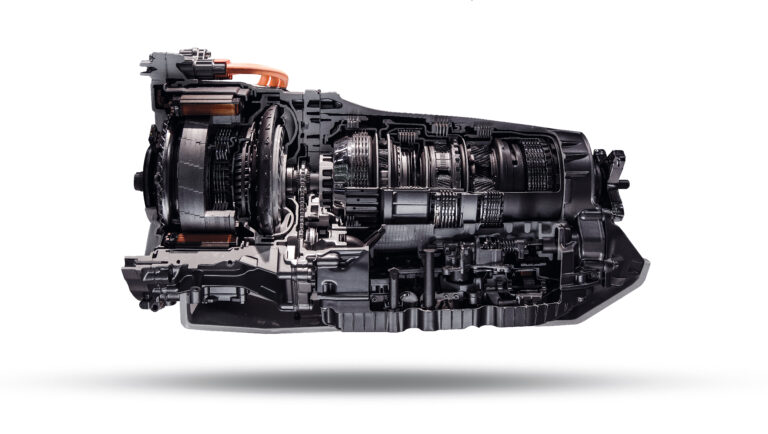7 Essential Summer Car Care Tips to Prevent Transmission Overheating
As the mercury rises, so does the temperature under the hood of your car. The transmission, in particular, is susceptible to overheating during hot weather, which can lead to a host of problems, including reduced performance and lifespan. Fortunately, there are several steps you can take to keep your transmission cool and your summer driving smooth. Here are seven essential tips to prevent transmission overheating and ensure your vehicle remains in top condition during the warmer months.
Firstly, it’s crucial to check your transmission fluid regularly. This fluid not only lubricates the moving parts within the transmission but also helps to dissipate heat. Over time, transmission fluid can break down and lose its effectiveness, so it’s important to check the level and condition of the fluid periodically. If the fluid is low or looks dirty, it may be time for a change or top-up. Fresh fluid can make a significant difference in keeping your transmission cool.
Secondly, consider using a synthetic transmission fluid. Synthetic fluids are designed to withstand higher temperatures and can provide better protection against heat compared to conventional fluids. They are especially useful in hot climates or if you frequently drive in heavy traffic, where the transmission is more likely to get hot.
Another tip is to install an auxiliary transmission cooler. This is particularly beneficial for those who tow trailers or carry heavy loads, as these activities can put additional strain on the transmission and cause it to heat up quickly. An auxiliary cooler can help to reduce the temperature of the transmission fluid, thereby protecting the transmission from the effects of high heat.
Additionally, it’s important to avoid excessive idling in hot weather. When your car is idling, the transmission fluid is not circulating as effectively, which can lead to increased temperatures. If you’re stuck in traffic or waiting for a long period, consider turning off your engine to prevent the transmission from getting too hot.
Maintaining your vehicle’s cooling system is also key to keeping your transmission cool. The engine’s cooling system helps to regulate the temperature of the entire vehicle, including the transmission. Make sure your radiator is in good condition and that the coolant levels are adequate. A well-maintained cooling system can prevent the transmission from overheating even on the hottest days.
Furthermore, be mindful of how you drive. Aggressive driving, such as rapid acceleration and hard braking, can generate a lot of heat within the transmission. By driving smoothly and avoiding sudden starts and stops, you can help keep the transmission temperature down.
Lastly, it’s wise to have your transmission inspected by a professional mechanic before the onset of summer. They can check for any issues that may contribute to overheating, such as leaks or damaged components, and address them before they become serious problems.
By following these seven tips, you can help ensure that your transmission stays cool even in the heat of summer. Regular maintenance, careful driving, and a few preventative measures can go a long way in protecting your vehicle’s transmission from the damaging effects of high temperatures. Keep these strategies in mind, and you’ll be well on your way to enjoying a worry-free summer on the road.
Keeping Your Cool: Transmission Cooling Strategies for Scorching Summers

Title: 7 Tips for Keeping Your Transmission Cool in Hot Weather
As the mercury rises and the days grow longer, the scorching summer sun can take a toll on your vehicle, particularly on the transmission system. Keeping your transmission cool during these hot months is crucial for maintaining performance and extending its lifespan. Fortunately, there are several strategies you can employ to ensure your vehicle runs smoothly, even when the temperatures soar.
Firstly, it’s essential to start with the basics: check your transmission fluid regularly. This fluid does more than just lubricate; it also helps to dissipate heat. Over time, transmission fluid can degrade or become low, which can lead to increased friction and, consequently, higher temperatures. Make sure the fluid is at the correct level and that it’s not burnt or dirty. If it is, a fluid change or flush might be necessary.
Another effective method for keeping your transmission cool is to install an external cooler. This is especially beneficial if you frequently drive in hot climates or haul heavy loads. An external cooler can reduce the temperature of the transmission fluid, preventing overheating and potential damage. It’s a small investment that can pay off by preventing costly repairs down the line.
Additionally, it’s wise to take it easy on your vehicle during the hottest parts of the day. If possible, avoid heavy acceleration and towing during peak heat hours. These activities can strain your transmission, causing it to work harder and heat up more quickly. If you must drive under these conditions, try to do so in the cooler early morning or evening hours.
Moreover, consider the benefits of synthetic transmission fluid. This type of fluid is designed to withstand extreme temperatures better than its conventional counterparts. While synthetic fluids may be more expensive, they can provide better protection for your transmission in hot weather, potentially saving you money on repairs in the long run.
Furthermore, keeping your engine cool will also help your transmission stay cool. The transmission is often cooled by the same radiator that cools the engine. Therefore, ensuring that your engine’s cooling system is functioning correctly will indirectly help maintain your transmission’s temperature. Regularly check your radiator, water pump, and thermostat to ensure they are in good working order.
Another tip is to avoid idling for long periods. When your vehicle is idling, the transmission fluid is not circulating as effectively, which can cause heat to build up. If you’re stuck in traffic or waiting for someone, it’s better to turn off your engine if it’s safe to do so, rather than let it idle for an extended period.
Lastly, pay attention to your driving habits. Aggressive driving can cause your transmission to work harder, which generates more heat. By driving smoothly and avoiding rapid starts and stops, you can help keep your transmission’s temperature down. This not only helps with cooling but also improves your overall fuel efficiency.
In conclusion, keeping your transmission cool during hot weather is vital for the health of your vehicle. By checking your transmission fluid, considering an external cooler, driving during cooler times of the day, using synthetic fluids, maintaining your engine’s cooling system, avoiding prolonged idling, and practicing smooth driving habits, you can protect your transmission from the harsh effects of summer heat. These simple yet effective tips will help ensure that your vehicle remains reliable and ready to tackle the road, no matter how high the temperatures climb.
Beat the Heat: 7 Tips to Protect Your Transmission During Hot Weather
As the mercury rises and the days grow longer, the heat can take a toll not just on us but also on our vehicles. The transmission, in particular, is susceptible to overheating, which can lead to a host of problems, including reduced performance and lifespan. Fortunately, there are several steps you can take to keep your transmission cool and your car running smoothly throughout the hot weather.
Firstly, it’s essential to maintain your transmission fluid at the proper level and condition. Transmission fluid acts as a lubricant and coolant for the moving parts inside your transmission. Over time, the fluid can break down and become less effective, so it’s crucial to check it regularly and change it according to your vehicle manufacturer’s recommendations. Fresh fluid will help ensure that your transmission doesn’t overheat and fail prematurely.
Another tip is to consider installing an external transmission cooler. This is especially beneficial if you live in a particularly hot climate or if you use your vehicle for towing or other heavy-duty activities that can cause additional strain on the transmission. An external cooler can significantly reduce the temperature of the transmission fluid, providing an extra layer of protection against heat.
Additionally, it’s wise to avoid excessive idling in hot weather. When your car is idling, the transmission fluid is not circulating as effectively, which can cause it to heat up quickly. If you’re stuck in traffic or waiting for a prolonged period, it’s better to turn off your engine when safe to do so to prevent the transmission from overheating.
Moreover, be mindful of how you’re driving. Aggressive driving habits such as rapid acceleration and hard braking can generate extra heat in the transmission. By driving smoothly and allowing your car to shift gears comfortably, you can minimize the stress on your transmission and keep it cooler.
It’s also important to keep an eye on your cooling system. Your car’s radiator and cooling system help to regulate the temperature of both your engine and transmission. Ensuring that your cooling system is in good working order, with no leaks or blockages, will help to prevent your transmission from getting too hot.
Another helpful strategy is to use synthetic transmission fluid if it’s compatible with your vehicle. Synthetic fluids are designed to withstand higher temperatures and can provide better protection for your transmission in hot weather. They can be more expensive than conventional fluids, but the investment can pay off in the long run by extending the life of your transmission.
Lastly, regular vehicle maintenance is key. This includes not only the transmission but also other systems that can affect its operation. For example, a malfunctioning exhaust system can increase the temperature under your vehicle, contributing to transmission heat. By keeping your entire vehicle in top condition, you can help ensure that your transmission stays cool and functions properly.
By following these seven tips, you can beat the heat and protect your transmission during hot weather. Regular maintenance, mindful driving, and additional cooling measures can all contribute to a cooler, happier transmission, ensuring that your vehicle remains reliable and ready to take on the summer roads. Remember, a little bit of prevention goes a long way in keeping your car running smoothly, no matter how high the temperatures climb.

